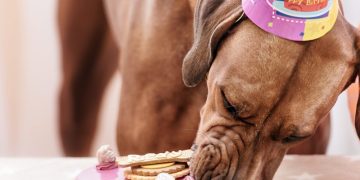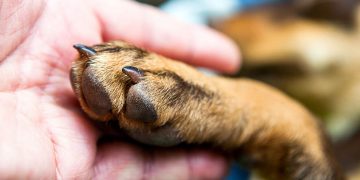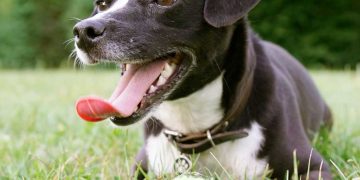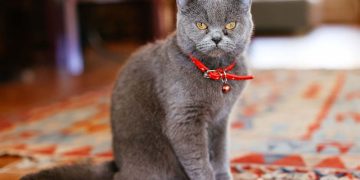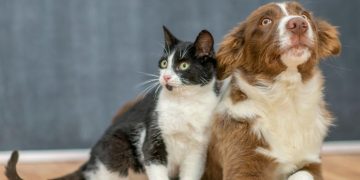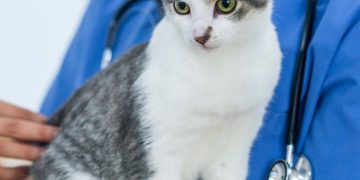Facts About Horses – Horses are amazing animals, and it’s easy to see why people love them so much. There are so many fascinating facts about horses that make them even more impressive! Here are some of our favorite interesting facts about these magnificent creatures:
A horse’s neck does not grow throughout their life.
For one thing, the neck is made up of 7 cervical vertebrae. The cervical vertebrae are the smallest and lightest of all the vertebrae in the horse’s body. It has 14 bones that are fused together to form its neck, as well as 9 muscles to help hold it up. The smallest bone in a horse’s body is called a hyoid bone (a U-shaped bone found near their throat). This small piece of cartilage helps support their tongue and larynx when they eat food or drink water!
Horses have long memories.
Horses have long memories, and are able to remember things for years. In fact, a horse can be trained to do things that it learned when it was young even after years of not seeing the person who trained them. Horses can also recognize people and places they haven’t seen in years, and they can remember their own names after not hearing them for a long time.
If a horse eats too much sugar and starch, it can founder.
If your horse eats too much sugar and starch, it can founder. So what is founder? Founder is a condition in horses where their hooves are distorted because of improper wear on their joints. The most common cause of founder is overfeeding sweet food to the horse, such as grain or other starchy grains (barley, corn). This can lead to an imbalance in the digestive system that makes it difficult for them to absorb nutrients properly. The result? Weight loss and painful joints that may require surgery to correct.
The best way to prevent this from happening is by feeding your horse properly; don’t overfeed him with sugar or starch-rich foods! If you have any concern about his weight loss and/or joint pain, consult with your veterinarian immediately so they can advise you on what steps should be taken next!
Horses have a field of vision that spans around 350 degrees.
Horses have a field of vision that spans around 350 degrees. This means that horses can see to the sides, but not behind them. Horses also can’t see as well in colour as humans do, but they have great night vision and can see movement in shadows better than we ever could!
Horses’ bones are similar to the human leg bone below the knee, or tibia.
Horses’ bones are similar to the human leg bone below the knee, or tibia. The horse’s leg bones are also similar to the human arm bone below the elbow, or radius.
Horses have four legs and two ears. They have a tail, too—but it’s not like a cat’s tail! Cats can move their tails in any direction at all because they don’t have muscles in them. Horses’ tails aren’t like that: they only move up and down when you tell them to do it (or if something scares them).
An Arabian Horse was the first breed to be recognized as its own breed.
The Arabian horse is the oldest breed of horse, and they were first bred in the Arabian Peninsula. In fact, they’ve been around for so long that archaeologists have discovered remains of horses from over 5,000 years ago in what is now Saudi Arabia. The first official records of Arabians were recorded during the time of Alexander the Great in 333 B.C., who was known to have had a very high regard for these beautiful animals.
This amazing breed became even more famous when Queen Victoria fell in love with one after seeing it at a show in England around 1853 and bought her own racehorse named “Dark Felt” (which had been trained by an Englishman named Arthur Alderson). This helped spread awareness about these beautiful creatures throughout Europe!
The name for a fully grown female is Mare, a male is called a Stallion and a child is called a Foal or Colt.
A mare is a female horse that has reached sexual maturity, usually around the age of four. A stallion is a male horse with no testicles and is past infancy, usually between ages two and four. A foal is a young horse; however, some cultures use colt for both sexes until about two years old.
Horses can’t breathe through their mouths.
One of the most interesting things about horses is their unique way of breathing. Unlike other mammals, horses can’t breathe through their mouths—they need to breathe through their nostrils instead. This means that if you’re taking pictures of a horse at an equestrian event and you want to get as close as possible without scaring them, you have to stand next to its nose. If you try getting closer than that and it bites down on your fingers or something less dramatic-but-still-painful like stepping on them with a hoof, don’t feel bad—it’s partly because you were invading its personal space by getting too close!
Horses also use their skin for respiration. When they run fast enough or exert themselves enough during exercise (like when they trot or gallop), they will sweat faster than humans do under similar circumstances; sweat allows heat loss from the body by evaporating into air instead of being retained inside it as moisture in blood vessels and organs would be under normal conditions like walking around outside doing nothing special just going about our daily business without sweating because we’re not exercising hard enough yet today but when we start running again tomorrow morning then maybe I’ll start sweating again too so let’s go!
Horses can sleep standing up.
There are a lot of reasons why horses can sleep standing up:
- A horse doesn’t need a flat surface to sleep on. They’re comfortable sleeping in a stall or in the pasture around them, so they don’t have any reason to lie down.
- Horses that are kept indoors at night may be able to stay on their feet longer if they stand rather than lie down. It’s not uncommon for people who keep horses stabled at night to notice that their animals are more tired the next morning if they’ve been lying down all night and don’t get up until after sunrise—and some people even say this is true for horses kept outdoors as well!
- There are also some safety concerns involved with leaving young foals unsupervised overnight (as much as we’d like it), which makes it important for them not only wake easily but also get back up again when necessary (in case something happens). If you’ve ever seen a colt run away from his mother because he was startled awake by her calling out his name when she came back into the barnyard, then you know what I’m talking about here!
A foal is born with only one litter mate, but may be raised in a group of up to 20 horses called ‘band’ or ‘herd’.
A foal is born with only one litter mate, but may be raised in a group of up to 20 horses called ‘band’ or ‘herd’.
If you’ve ever seen a herd of horses, you know that they travel together in large numbers. It turns out that these groups are actually made up of smaller family units called bands. Bands typically consist of mares (females) and their young offspring from several years ago that were born into the same family line. These bands will often stay together for life and can include up to 20 horses!
These facts about horses will show you how smart and unique these animals are
Horses are very intelligent and unique animals that deserve respect. They have been domesticated and used for work for thousands of years, and they can learn a lot from humans. Horses are social animals, so it’s important to take care of them by feeding them well and giving them lots of attention. Horses also love to play games with their owners just like other pets do!
A horse has forty-two teeth in its mouth: twelve incisors (four on top, four on bottom), six canine teeth (which are often referred to as “eye teeth”), twenty premolars (six upper, fourteen lower), and six molars (two upper premolars, two lower premolars). The horse’s mouth is designed for chewing grasses; its tongue cleans food off the front teeth before it enters the throat.
Horses have one more vertebrae than humans do—their neck vertebrae extend farther back into their bodies than ours do—so they can stretch their heads higher up than we can when raising them above ground level while grazing or drinking water from a trough or pool if there’s enough room available inside your house! Sometimes this can cause problems if they don’t adjust quickly enough after being put into smaller spaces where visibility might be limited due to obstacles such as furniture blocking out sunlight coming through windows high above ground level at certain times during winter months.”
Conclusion
If you’re a horse lover, then these facts are sure to be interesting. The next time you see a horse at the zoo or on TV, take a moment to think about what it’s like to be that animal. You might just learn something new about yourself in the process!
